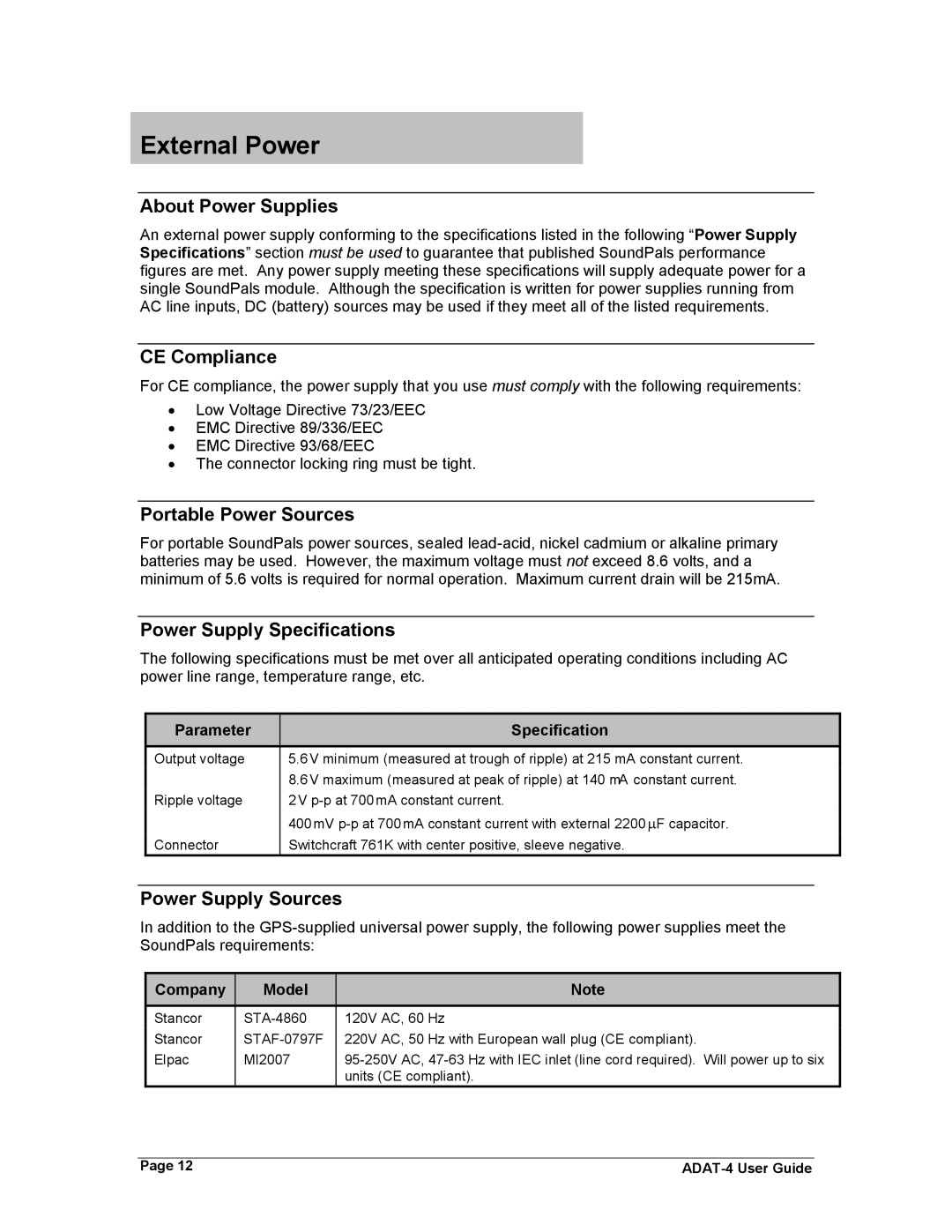ADAT-4 specifications
The Philips ADAT-4, a groundbreaking digital audio tape recorder, represents a significant advancement in recording technology. Launched by the Dutch electronics giant Philips, this innovative device is well-regarded for its precision and versatility, making it a staple in both professional studios and personal music setups.At the heart of the ADAT-4 is its ability to record eight tracks of audio simultaneously. This multi-tracking capability allows musicians and sound engineers to layer multiple audio sources, such as vocals, guitars, and drums, creating rich and complex soundscapes. The machine operates using a unique digital audio tape (DAT) format, which ensures high fidelity and clarity in sound reproduction.
One of the standout features of the ADAT-4 is its user-friendly interface. The front panel is equipped with a series of intuitive controls, enabling users to navigate between various functions seamlessly. The LCD screen displays real-time information about recording levels, track status, and remaining tape time, allowing for efficient monitoring during sessions. This design philosophy reflects Philips’ commitment to making professional recording accessible to all.
In terms of connectivity, the ADAT-4 is versatile, featuring multiple input and output options, including S/PDIF and optical connections. This capability allows it to integrate smoothly with other digital equipment, such as mixing consoles and synthesizers, enhancing its utility in a studio setting. Additionally, the ADAT format was designed to support a wide range of audio processing technologies, making the ADAT-4 compatible with various audio formats and systems.
The sophisticated error correction technology in the ADAT-4 further enhances its reliability. It utilizes advanced algorithms to detect and repair any audio data discrepancies, ensuring that recordings are as pristine as possible, even in challenging conditions. This feature is particularly critical in professional settings where audio integrity is paramount.
The build quality of the ADAT-4 is another noteworthy aspect, showcasing Philips' dedication to durability. Constructed with high-quality materials, the device is built to withstand the rigors of frequent use, making it a worthwhile investment for both amateur and professional audio engineers.
In conclusion, the Philips ADAT-4 is a remarkable digital audio tape recorder that combines advanced technology with user-centric design. Its eight-track recording capability, intuitive interface, versatile connectivity options, robust error correction, and durable construction make it an essential tool for anyone serious about audio production. Whether in a professional studio or for personal use, the ADAT-4 continues to be a beloved choice among audio enthusiasts.

